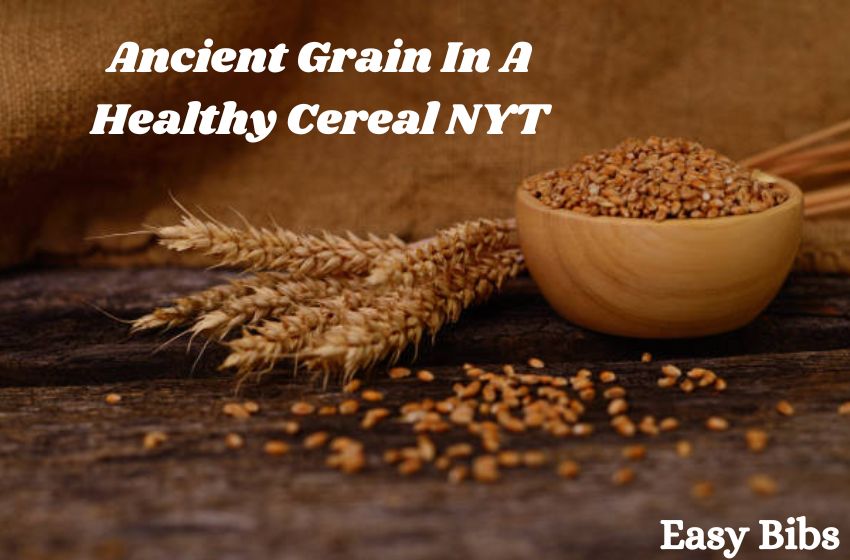When it comes to breakfast, the focus on nutrition has never been more important. With the rising popularity of health-conscious eating, ancient grains have taken center stage in the world of cereals. This article explores the concept of “ancient grain in a healthy cereal NYT,” a topic gaining traction in modern dietary discussions. We’ll dive into the benefits of these grains, their history, and why they are increasingly featured in healthy cereals, often highlighted by reputable sources like the New York Times.
What Is an Ancient Grain?
Ancient grains refer to a group of grains and pseudocereals that have been cultivated for thousands of years, remaining largely unchanged by modern agricultural practices. Unlike their modern counterparts, such as wheat or corn, ancient grains have retained their original nutritional profiles, making them a powerhouse of vitamins, minerals, and fiber. Some common examples of ancient grains include quinoa, amaranth, millet, and spelt.
Why Ancient Grains in a Healthy Cereal?
The inclusion of ancient grains in healthy cereals is not just a trend; it’s a return to a more balanced, nutrient-dense way of eating. These grains are celebrated for their high fiber content, essential fatty acids, and a wide range of micronutrients that support overall health. When you find an ancient grain in a healthy cereal, you’re not just eating breakfast; you’re nourishing your body with a blend of tradition and nutrition.
Nutritional Benefits of Ancient Grain in a Healthy Cereal NYT
The New York Times has often highlighted the nutritional advantages of including ancient grains in daily meals. Ancient grains like quinoa are complete proteins, containing all nine essential amino acids. Others, like millet, are rich in magnesium and phosphorus, supporting bone health and energy production. These grains are also an excellent source of dietary fiber, which aids in digestion and helps maintain steady blood sugar levels. For those looking to improve their diet, ancient grains provide a hearty and wholesome option.
Ancient Grain in a Healthy Cereal NYT: A Sustainable Choice
The sustainability of ancient grains is another factor contributing to their popularity. These grains often require fewer resources to grow and can thrive in diverse environments, making them a more eco-friendly option. The New York Times has featured several articles on the environmental benefits of ancient grains, emphasizing their role in sustainable agriculture. By choosing a healthy cereal that includes ancient grains, consumers are not only investing in their health but also in the planet’s well-being.
The Role of Ancient Grain in a Healthy Cereal NYT in Modern Diets
In today’s fast-paced world, breakfast cereals offer a quick and convenient meal option. However, not all cereals are created equal. The inclusion of ancient grains in these cereals provides a balance of taste, texture, and nutrition that is hard to match. For instance, spelt, an ancient relative of wheat, adds a nutty flavor and a rich source of fiber to cereals. Amaranth, on the other hand, is known for its light, fluffy texture and its ability to keep you feeling full longer. The New York Times has acknowledged the growing consumer demand for such nutritious options, making ancient grains a staple in healthy cereals.
Ancient Grain in a Healthy Cereal NYT: Consumer Appeal
The appeal of ancient grains in healthy cereals is multifaceted. For health-conscious consumers, these grains offer a way to enhance their diet without compromising on taste. They are also attractive to those with dietary restrictions, such as gluten intolerance, as many ancient grains like quinoa and millet are naturally gluten-free. The New York Times has often featured stories on how these grains are becoming a popular choice for people seeking to lead a healthier lifestyle.
Easy Bibs: A Platform Emphasizing Ancient Grains in Healthy Cereal NYT
At Easy Bibs, we recognize the importance of staying informed about the latest trends in health and nutrition. The rise of ancient grains in healthy cereals is a topic we believe deserves attention. Whether you’re looking for ways to incorporate more nutrition into your morning routine or seeking sustainable food choices, ancient grains offer a versatile and nutrient-rich solution. Easy Bibs is committed to providing our readers with valuable insights into such health trends, empowering them to make informed dietary choices.
The Future of Ancient Grain in a Healthy Cereal NYT
As more research highlights the benefits of ancient grains, their presence in healthy cereals is likely to grow. The New York Times has predicted that these grains will continue to be a significant part of the health food movement, driven by consumer demand for nutritious and sustainable food options. For those looking to improve their diet, ancient grains in healthy cereals offer a simple yet effective way to start the day on the right foot.
Conclusion: Embracing Ancient Grain in a Healthy Cereal NYT
In conclusion, ancient grains are more than just a trend—they are a return to the roots of nutrition. By choosing cereals that include these grains, you’re not only enhancing your diet but also embracing a more sustainable and health-conscious way of eating. As highlighted by the New York Times, the integration of ancient grains into modern diets is a positive step towards a healthier future. At Easy Bibs, we encourage our readers to explore these grains and discover the benefits they can bring to their daily lives.
Ancient grains in a healthy cereal represent a perfect blend of tradition and modern nutrition, offering a wholesome start to your day. Whether you’re familiar with these grains or new to them, their inclusion in your breakfast routine can make a significant difference in your overall health and well-being.


